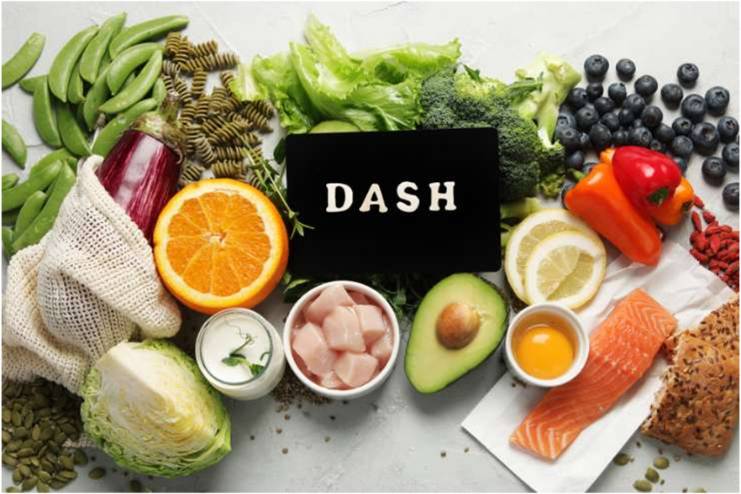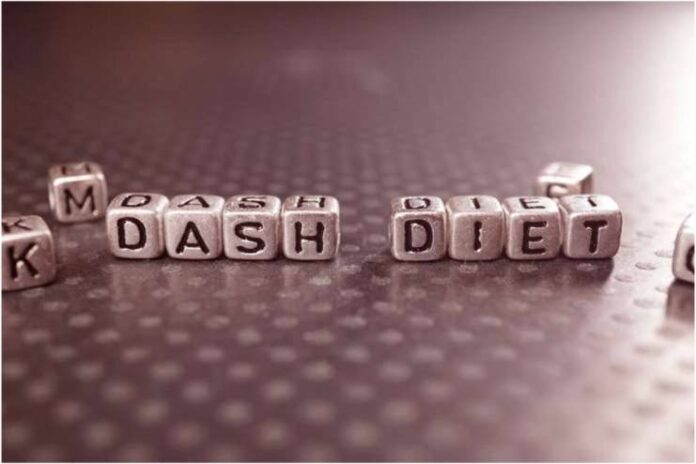Affiliate Disclaimer
Some links in this article are affiliate links. We may earn a small commission if you make a purchase through these links, at no extra cost to you. We only recommend products we find useful to our readersA persuasive and successful dietary approach for controlling high blood pressure, Dietary Approaches to Stop Hypertension (DASH) diet gives people a proactive way to preserve their cardiovascular health. To counteract the negative consequences of hypertension, which affects millions of people globally, people must adopt more holistic lifestyle changes, including dietary adjustments.
The DASH diet aims to improve general heart health and lower high blood pressure. With the number of cases of hypertension on the rise, primarily due to sedentary lifestyles and poor dietary choices, we must take preventative steps. The importance of the DASH diet in tackling this health issue is emphasized throughout the essay. A cornerstone in the quest for lower blood pressure and long-term cardiovascular health, the DASH diet includes foods high in nutrients and promotes balanced eating.
What is the DASH Diet?
Specifically designed to battle high blood pressure and promote heart health, the Dietary Approaches to Stop Hypertension (DASH) diet is an organized and evidence-based eating plan developed particularly for this purpose. (DASH) Dietary Approaches to Stop Hypertension emphasizes consumption of nutrient-dense foods that are beneficial to your general health.
Dietary Approaches to Stop Hypertension (DASH) encourages a well-rounded consumption of various food groups, with the primary emphasis being on fruits, vegetables, whole grains, lean proteins, and low-fat dairy products. A diet abundant in crucial nutrients like potassium, calcium, magnesium, and fiber is built on these components, which form the foundation of those nutrients. Consuming nutrient-rich foods is essential when it comes to maintaining healthy cardiovascular health and controlling blood pressure levels.
Dietary Approaches to Stop Hypertension (DASH) encourages consumers to consume a recommended number of servings from each food group daily. It involves consuming a substantial amount of fruits and vegetables and consuming many portions of these foods daily to guarantee an abundance of vitamins, minerals, and antioxidants. Another critical diet component is whole grains, including brown rice and bread made with whole wheat. These grains are a source of sustained energy as well as essential nutrients.

Compared to forms of protein that are heavy in fat, lean proteins, which may be obtained from chicken, fish, nuts, and legumes, provide a more nutritious alternative. The inclusion contributes to the calcium intake of low-fat dairy products, eliminating the need for additional saturated fats. To achieve a delicate equilibrium, the DASH diet significantly emphasizes reducing sodium consumption while simultaneously encouraging the consumption of foods high in potassium. Because potassium helps counteract sodium’s adverse effects on blood pressure, this equilibrium is essential for maintaining appropriate blood pressure levels throughout time.
The DASH diet, in its most basic form, functions as an all-encompassing guide to the cultivation of a lifestyle that is heart-healthy. Individuals can utilize the concepts of the DASH diet to manage hypertension and nurture overall cardiovascular well-being. It is accomplished by emphasizing foods rich in nutrients and encouraging a holistic approach to nutrition.
Also, read: 7 Days Apple Diet Plan And How it Aids in Weight Loss
Components of the DASH Diet

- Fruits and Vegetables: The DASH diet significantly emphasizes consumption of wide variety of colorful fruits and the vegetables. These foods are high in various nutrients, including vitamins, minerals, and antioxidants, and they provide a wide range of advantages to one’s nutritional status. The brilliant colors represent a variety of phytonutrients, each of which contributes to the health of the cardiovascular system. Fruits and vegetables contain potassium, magnesium, and fiber, all contributing to reduced blood pressure when taken together. Fruits and vegetables are very crucial components of the DASH diet for sustaining general well-being since the diet emphasizes a rainbow of choices, which guarantees a broad range of nutrients.
- Grains Whole: Whole grains are an essential component of the DASH diet, which offers many advantages for managing blood pressure. Whole grains, as opposed to processed grains, keep their bran and germ, which are rich in vitamin and mineral content and fiber. Increasing blood vessel function and lowering cholesterol levels are two ways this composition helps improve heart health. In addition to assisting in preventing and managing hypertension, the slow digestion of whole grains contributes to maintaining stable blood sugar levels. The (DASH) Dietary Approaches to Stop Hypertension emphasizes whole grains, which helps create a healthy and balanced approach to the consumption of carbohydrates.
- Lean Proteins: One of the most critical aspects of the DASH diet is the consumption of lean proteins, which can be obtained from various sources, including lean meats, poultry, fish, nuts, and seeds. These options, which are high in protein, provide essential nutrients devoid of the saturated fats typically found in protein sources high in fat. The incorporation of lean proteins is beneficial to the regulation of blood pressure, the health of the muscles, and the overall well-being of the individual. Nuts and seeds, in particular, are a source of beneficial fats and extra nutrients. The (DASH) Dietary Approaches to Stop Hypertension offers individuals looking to improve their cardiovascular health a comprehensive nutritional basis by integrating a wide range of lean protein sources.
- Low-Fat Dairy Products: The DASH diet significantly emphasizes the low-fat dairy products since they are very rich in calcium and vitamin D, both of which are very crucial for maintaining healthy bones. Additionally, consuming these dairy products helps maintain a healthy level of saturated fat while contributing to the overall nutrient profile of the diet. The goal of the DASH diet is to reduce blood pressure, and the calcium and potassium levels of low-fat dairy products are in line with this strategy. Individuals can enjoy the benefits of dairy without sacrificing the heart-healthy principles of the DASH diet, making it an essential component for those treating hypertension. It is accomplished by selecting choices that are low in fat.
- Limited Sodium and Added Sugars: One of the most critical aspects of DASH diet is the intentional restriction of sodium and added sugars, which are essential for successfully managing blood pressure. The DASH diet addresses this issue by pushing for reduced salt consumption, which has been associated with raised blood pressure. High sodium intake has been linked to elevated blood pressure. People can better control the amount of salt they consume by selecting fresh and whole foods and reducing the amount of processed foods they consume. On top of that, an emphasis is placed on reducing the amount of added sugars to reduce risk factors related to cardiovascular diseases. The focus on lowering these components within the DASH diet is consistent with a holistic approach to heart health, emphasizing the significance of making thoughtful food choices to maintain healthy blood pressure levels.
Also, read: Diet Plan Control For Hypertension
Implementing the DASH Diet

Adopting Dietary Approaches to Stop Hypertension (DASH) requires a commitment to sustainable lifestyle changes and practical factors. Here are some tips to implement the DASH diet in your day-to-day activities:
- Meal Planning: Efficient meal planning is a vital component of the DASH diet’s effectiveness. Learn about the appropriate serving sizes for every food group first. Your meal plans should include a range of fruits, vegetables, nutritious grains, lean meats, and low-fat dairy. To save time over the week, think about making meals in bulk and ensuring that wholesome options are always available.
- Healthy Cooking Techniques: Select cooking techniques that maintain the nutritional value of food. Fried food is not as healthy as baking, sautéing, steaming, or grilling. Try varying the flavor with herbs and spices rather than using too much salt. You have more control over the ingredients when you cook at home, which makes it simpler to follow the DASH diet guidelines.
- Overcoming Obstacles: Following the DASH diet can be difficult, particularly if you have a busy lifestyle. One frequent barrier is the ease of processed foods, which are sometimes heavy in added sugars and sodium. Opt for whole, less processed options to counteract this. Eating out presents an additional difficulty since menu selections might only sometimes be in line with DASH recommendations. In these situations, think about looking over menus in advance, asking for specific healthier preparations, or choosing eateries that value using whole, fresh foods.
- Gradual Transition: Adopting the DASH diet doesn’t need to happen simultaneously. Start with modest, long-lasting adjustments. Increase your consumption of fruits and vegetables gradually, transition to whole grains, and try different lean protein sources. This method makes a more pleasant adjustment to the new eating pattern possible.
- Keep Yourself Hydrated: Although it’s often forgotten, staying adequately hydrated is essential for good health. The best option is water; sticking to the DASH guidelines means consuming fewer sugar-filled drinks. To add flavor to water without sacrificing health, try infusing it with herbs or citrus.
Conclusion
Through the promotion of nutrient-rich foods, (DASH) Dietary Approaches to Stop Hypertension diet is a potent and scientifically supported approach for treating hypertension. The DASH diet provides a comprehensive strategy for promoting heart health and lowering blood pressure by emphasizing fruits, vegetables, whole grains, lean proteins, and low-fat dairy products. These dietary groups are rich in vitamins, minerals, and antioxidants, which support general health and blood pressure regulation.
It is crucial to understand that dietary modifications can substantially impact a person’s health. For this reason, readers are highly advised to speak with healthcare professionals or nutritionists before making any significant nutritional adjustments. Expert advice guarantees tailored suggestions considering each person’s goals and unique health situations. Let’s embrace the DASH diet’s advantages and work toward a heart-healthier, more conscientious lifestyle with the knowledgeable assistance of medical specialists.
Also, read:
References
- https://www.mayoclinic.org/healthy-lifestyle/nutrition-and-healthy-eating/in-depth/dash-diet/art-20048456
- https://www.nhlbi.nih.gov/education/dash-eating-plan
- https://www.medicalnewstoday.com/articles/254836
- https://www.healthline.com/nutrition/eat-the-rainbow
- https://www.hsph.harvard.edu/nutritionsource/what-should-you-eat/vegetables-and-fruits
- https://www.mayoclinic.org/diseases-conditions/high-blood-pressure/expert-answers/whole-grain-foods/faq-20058417
- https://www.mayoclinic.org/healthy-lifestyle/nutrition-and-healthy-eating/in-depth/whole-grains/art-20047826
- https://www.ncbi.nlm.nih.gov/pmc/articles/PMC5439361
- https://www.eatforhealth.gov.au/food-essentials/five-food-groups/lean-meat-and-poultry-fish-eggs-tofu-nuts-and-seeds-and
- https://pubmed.ncbi.nlm.nih.gov/20153619
- https://www.ncbi.nlm.nih.gov/pmc/articles/PMC3289141
- https://www.eatforhealth.gov.au/food-essentials/fat-salt-sugars-and-alcohol
- https://www.cdc.gov/salt/index.htm
- https://health.clevelandclinic.org/dash-diet-what-is-it-meal-plans-and-recipes
- https://www.foodnetwork.com/healthyeats/diets/dash-diet-meal-prep-tips
- https://www.ncbi.nlm.nih.gov/books/NBK482514
In this Article



















